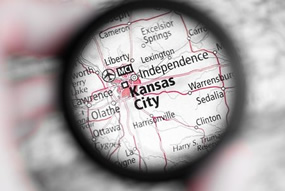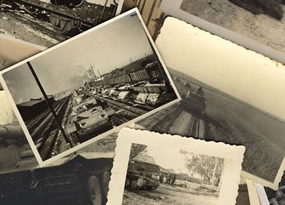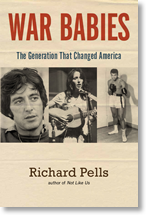 Most people who’ve never been there think of Kansas City as an overgrown cow-town. Yet when I was growing up in Kansas City in the 1940s and 1950s, the city had a reputation as one of the centers of modern American culture—especially in literature, art, music, and movies.
Most people who’ve never been there think of Kansas City as an overgrown cow-town. Yet when I was growing up in Kansas City in the 1940s and 1950s, the city had a reputation as one of the centers of modern American culture—especially in literature, art, music, and movies.
In 1959, when I was a freshman at Rutgers University, I was supposed to write a term paper for an English class. My father, a violinist with the Kansas City Philharmonic, arranged for me to meet with the conductor of the Philharmonic over Christmas vacation so that he could tell me about what the culture of the city was really like. He spent three hours with me on a Saturday afternoon, and that was my introduction to the surprising cultural history of the city in which I was born and raised.
What were the contributions that Kansas City made to American culture in the 20th century? None was more important or influential than the impact the city had on Ernest Hemingway. For six months, from October 1917 to April 1918, Hemingway worked as a reporter for the Kansas City Star. For all the mythology of what Hemingway absorbed from his fellow-expatriates in the 1920s in Paris, it was at the Star that Hemingway learned how to write—particularly the unadorned prose, bereft of adjectives and adverbs, that became his trademark in his novels and short stories, and shaped the prose of his successors throughout the rest of the century.
At the beginning of the century a real estate developer named J.C. Nichols visited Seville, Spain. He was so impressed with the architecture of Seville that he reproduced it in what he called the Country Club Plaza, which opened in 1922, and was the first outdoor shopping mall in the United States. Close to the Plaza, the Nelson Art Galley opened in 1933, and became one of the most important museums for Chinese art in America. At the same time in the 1930s, Thomas Hart Benton made his home in Kansas City where his rural esthetic, his portraits of farm dwellers and Depression-scarred city folk, blossomed.
In addition, ever since African American jazz musicians began to move north from New Orleans in 1918, Kansas City developed into a home of jazz, rivaling Chicago and New York. Indeed, no jazz saxophonist had more of a stimulus on what became known as “modern” jazz than Charlie Parker, who was born in Kansas City in 1920 and developed his musical techniques with jazz bands in the city until he moved to New York in 1939.
But perhaps it was at the movies that Kansas City had its greatest effect. Walt Disney’s family moved to Kansas City in 1911, and he remained in the city until 1928 when he departed for Hollywood. Before Disney left, however, he invented his greatest creation—Mickey Mouse, which launched Disney’s career as one of the most imaginative animators in film history. Meanwhile, Robert Altman was born in Kansas City in 1925, and grew up there before migrating to Hollywood in 1946. Altman started his film career as a television director, but soon graduated to the movies. In the 1970s, he made three of the most formidable films of the decade—MASH, McCabe and Mrs. Miller, and Nashville.
Like most northern and midwestern cities in the late 20th century, the demography of Kansas City changed as white people moved to the suburbs in Kansas and the city’s population became largely African American. Still, when I attended the 50th reunion of my high school class in 2009, we all remembered what the city had given us as grateful recipients of its cultural heritage.

